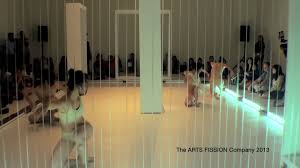Post 20. Reverse engineering a Leonardo article
- ckarpodini
- Apr 7, 2019
- 2 min read
In my tutorial with our lecturer I have been advised to reverse engineer one of Leonardo journal articles in order to find structures that will help the writing of my multimedia report. For this task I chose an article which has similarities with my project. The name of the article is “Interactive Sonification of Weather Data for The Locust Wrath, a Multimedia Dance Performance” by PerMagnus Lindborg.
This article is a project based research, much more extended that the one I am called to do but the similarities are really helpful for my research. The aforementioned text has to do with the sonification of data and in particular weather data, combined with a choreography. Below it follows the analysis of the structure of this article with a brief explanation of the subject of each section.
Before the beginning of the Article the author briefly introduce the project on the Abstract. Starting the main body we read references on other artists that have worked on other projects with sonification. Right after the author referred to the relevant literature according the research demands but mainly focused on sonification references. He firstly referred to the book “The sonification Handbook” which is a dominant book for any project related to sonification. In the next paragraph he mention two other definitions of sonification and he compare them expanding in that way the literature review of his research.
It is following a very important aspect of our practice the theoretical frameworks with which he is going to approach and analyse his work. For this research the author chose the “Aesthetic Perspective Space” which is a theory of Paul Vicker. This theory is also focused on the sonification.
The next section is dedicated in the actual project work. He is presenting the project with a brief presentation of it’s history, how and when does it started. He is also giving a few more details about the structure of the project and the software that supports it before he moves in describing the creative process. The last it involves the collaboration of three parts, the choreographer, composer and sonification designer which makes the production process more interesting and complicated, therefor worth to be mentioned.
On the next section the author jumps deep in the more technical aspects of the construction of the project. He dedicates his next pages in describing how and from whom he retreated the weather data that he is using. Then he is describing the sonification method and the way he and his colleagues combined all the aspects with an interactive mapping method.
He is finishing his article with a summary, which I would describe a brief description of the performance, given examples of the interaction among the weather the sound and the dancers.
Lastly, he is introduction a section of discussions in which in my opinion is the most important part of the article as he is questioning the outcomes of his project and relating his project with the sonification theories.
Lindborg, P. (2018). Interactive Sonification of Weather Data for The Locust Wrath, a Multimedia Dance Performance. Leonardo, 51(5), pp.466-474.




Comments